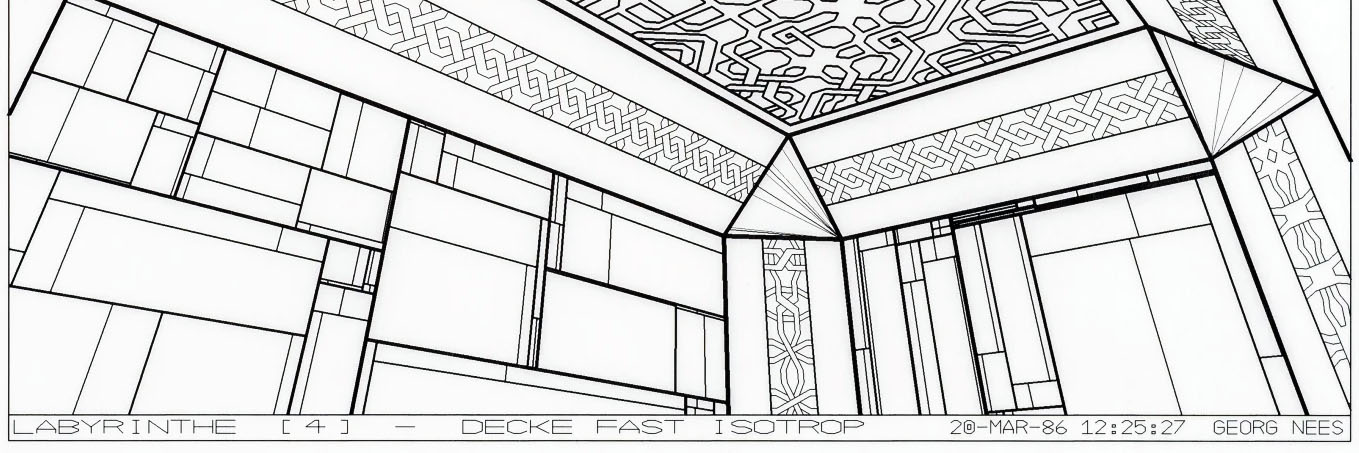Georg Nees

Georg Nees, Labyrinthe 4, Decke fast isotrop, 1986
Georg Nees was a German artist and academic who is often credited as one of the pioneers of computer art. Born in 1926, Nees initially studied mathematics, physics, and philosophy before turning his attention to the intersection of art and technology. He is best known for his work in the 1960s, during which he created some of the first computer-generated artworks.
Nees' work often involved the use of algorithms and mathematical formulas to generate visual compositions. His art explored geometric shapes, patterns, and symmetries, and he was particularly interested in how computers could be used to create variations on these themes. His early works were primarily black-and-white plots, created using plotters, which were the primary output devices for computers at the time.
In 1965, Georg Nees became one of the first artists to have an exhibition solely featuring computer-generated art. This exhibition, held in Stuttgart, Germany, was groundbreaking and helped to legitimize computer art as a new form of artistic expression. His work has since been featured in numerous exhibitions and collections worldwide, and he has received various awards and honors for his contributions to the field.
In addition to his artistic endeavors, Nees was also an academic and researcher. He wrote extensively on the subject of computer art and aesthetics, contributing to the intellectual foundation of the field. His work has influenced not only artists but also scholars and researchers interested in the relationship between art and technology.
Georg Nees passed away in 2016, but his legacy lives on through his groundbreaking work and its impact on the fields of art and computer science. He is remembered as a visionary who saw the artistic potential of computers long before the technology became a ubiquitous part of modern life.